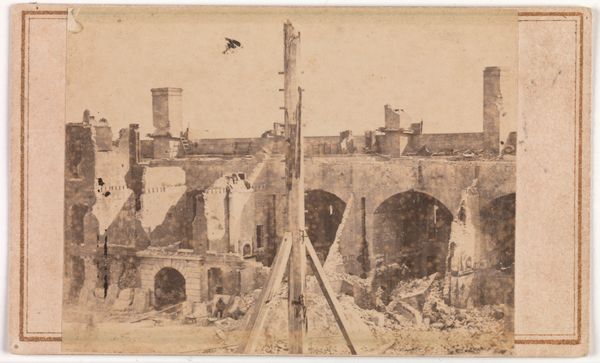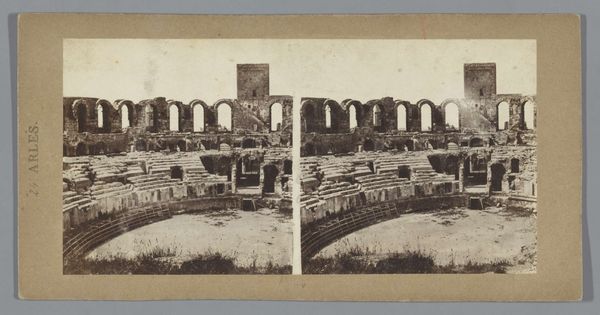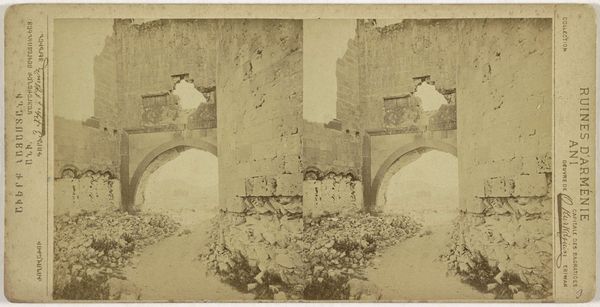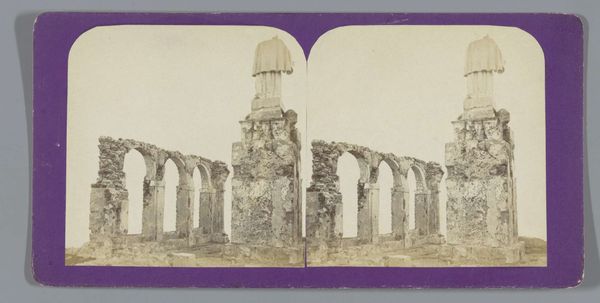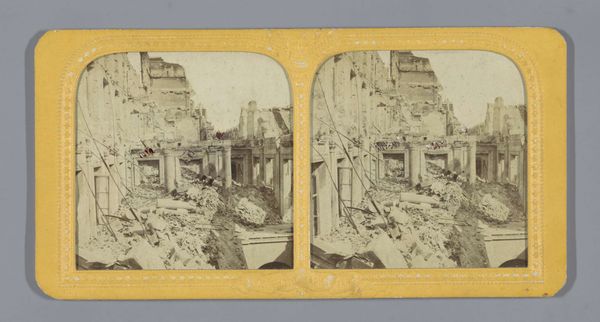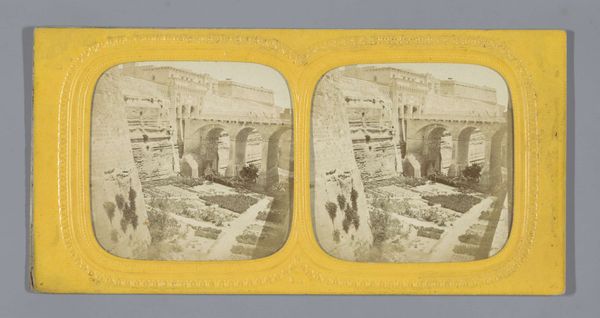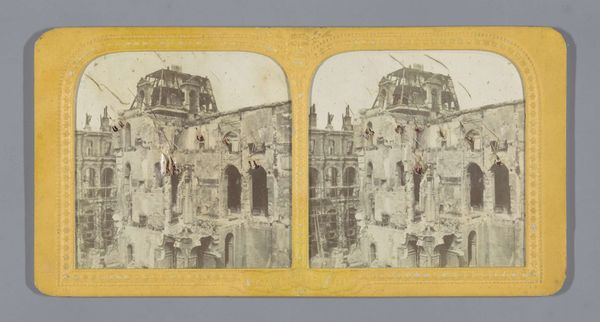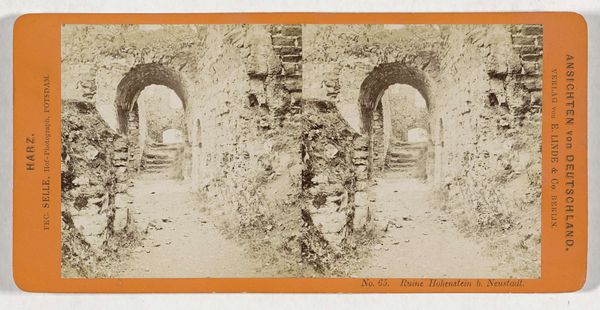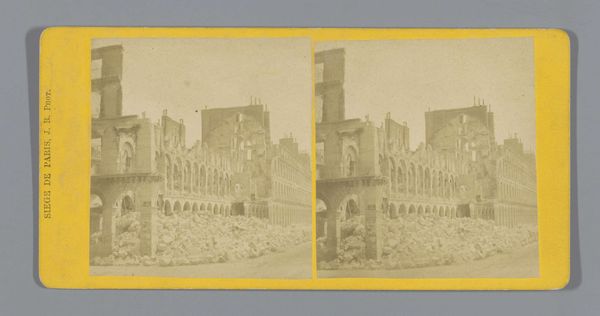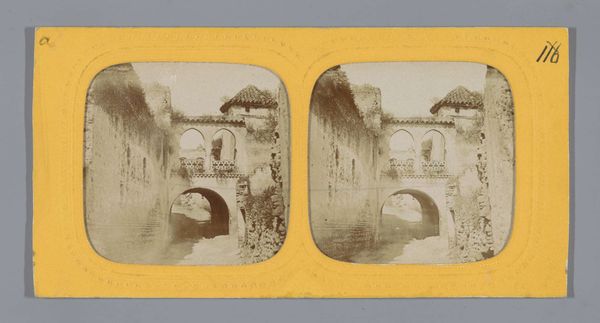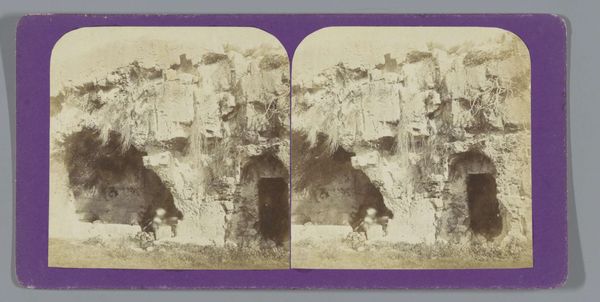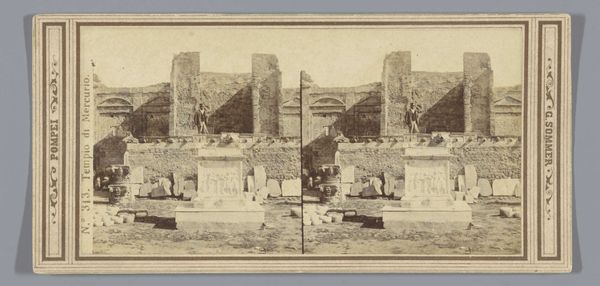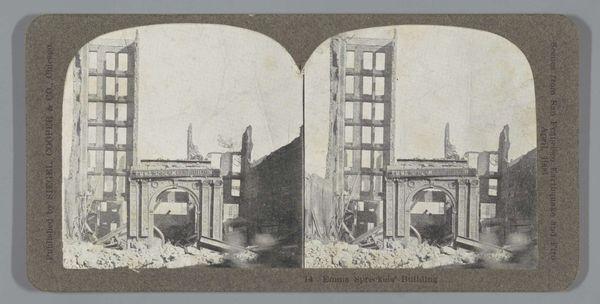
print, photography
# print
#
landscape
#
photography
#
cityscape
#
realism
Dimensions: height 85 mm, width 170 mm
Copyright: Rijks Museum: Open Domain
Editor: This stereograph, "Ruins of the Grenier de reserve in Paris" by Adolphe Block, was taken in 1871. It looks like a photo of a ruined building, maybe after a fire or a battle. There is something bleak and sorrowful about this image of destruction... How do you interpret this work? Curator: The photograph presents us with a cityscape of destruction, captured in stark realism. As an activist, what immediately strikes me is the socio-political context of this image. This is Paris in 1871. What do you know about the events that transpired here that year? Editor: Isn't that during or just after the Franco-Prussian War, and around the time of the Paris Commune? Curator: Exactly. The Grenier de Reserve, a grain storage building, became a casualty of these tumultuous times. Block’s photograph isn’t just documenting damage; it is commenting on the ravages of war and, even more significantly, the internal strife within Paris itself during the Commune. Do you think a photograph of the damage during war looks different than a photograph documenting the damage from civil war? Editor: Maybe. War has sides, so images might focus on external enemies... Here, though, I see a complete collapse of order, and the emotional context feels more immediate. The photo feels less like documentation and more like a cry for help. Curator: Precisely. And the choice of the stereograph, designed for a kind of domestic viewing, implicates its audience. Were they to ponder their own culpability in these events? What, if anything, could have been done to prevent this scene of ruin? The photograph transforms into a poignant meditation on urban violence and its impact on ordinary lives. Editor: This gives me a whole new perspective. I hadn't considered how the stereograph format implicates the viewer in the scene of destruction. Curator: Photography had, and still has, the ability to reveal both literal truths and subjective experiences within a historical reality. Recognizing the social dimensions of that process is one goal we share in art history and in its future.
Comments
No comments
Be the first to comment and join the conversation on the ultimate creative platform.
